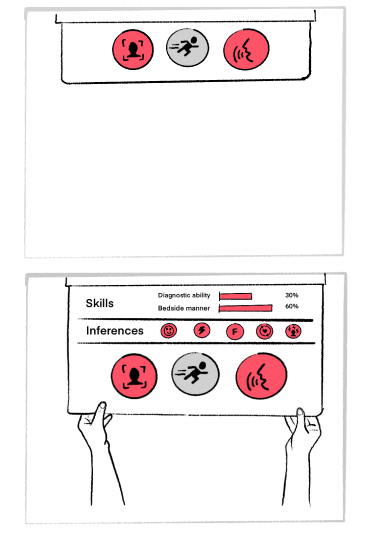How might we...
...convince students that the benefits of the MediVR program outweigh risks to their academic performance?
This pattern is a co-created output a Design Jam which took place in Singapore on the subject of Data Transparency and Control in the Metaverse. During the Design Jam, six design teams created simple prototypes which helped deliver better transparency and control over data use in fictional services.
MediVR is an immersive medical training simulation that enables students to practice their bedside manner and diagnostic skills in the metaverse using AI-powered virtual patients.
In the fourth season of the Singapore Accelerator, an ongoing research collaboration between the TTC Labs team at Meta and the Singapore Infocomm Media Development Authority (IMDA) and Personal Data Protection Commission (PDPC), MediVR focused on addressing student concerns around the capture and processing of data within an educational and training context.
Through their prototype MediVR explored the extension of their existing product functionality (voice, movement) to incorporate facial expression and gaze tracking into VR student assessments for trainee doctors. To gain student trust, they proposed a step-by-step onboarding experience for first time medical students to showcase how user data can be used to improve their learning.
How might we...
...convince students that the benefits of the MediVR program outweigh risks to their academic performance?
With a focus on empathy and bedside manner, MediVR’s prototype explores how trust can be developed through transparency and education.
Data Walkthrough
The user is provided with a product walkthrough that demonstrates how body-based data is used throughout the simulation. Iconography and accompanying descriptions provide clear explanations of how different features utilize body-based data and why.
Scenario Demonstrations
As part of the onboarding experience, students are shown various scenarios that demonstrate how body-based data can facilitate their learning and provide feedback on skills such as bedside manner which would otherwise be impossible to access.
Data Dashboard
At the end of the onboarding experience, students are introduced to their ‘tracking report’, a dashboard that provides a breakdown of the body-based data that was collected, how often and why it was processed. This provides a detailed overview of how body-based data can be used to improve learning and training and provide reassurance as to the purpose of its use.

In the Design Jam, MediVR used a variety of XR prototyping techniques including sketches, props and video, to demonstrate their solution. The resulting prototype and those of the other participating companies, were synthesized into insights and learnings with which a set of privacy UX patterns were developed.
MediVR’s prototype was used to create the Data Head-Up Display design pattern.
The Data Head-Up Display is a pull-down dashboard that provides an overview of various metrics relating to body-based data, including types collected, use and frequency. The metrics are also feature specific, providing a detailed breakdown of how data processing relates to functionality, demystifying data use and instilling user trust.